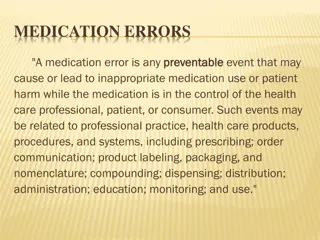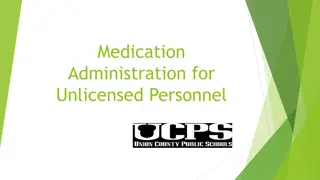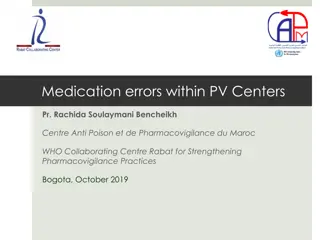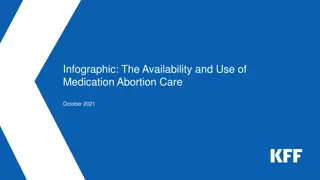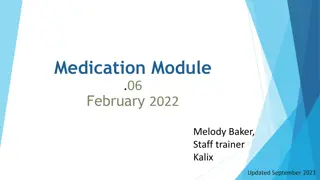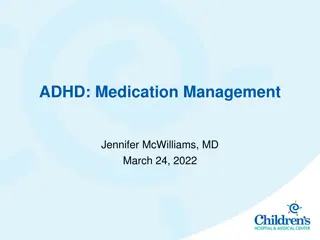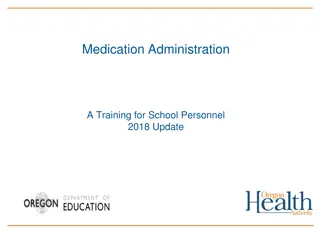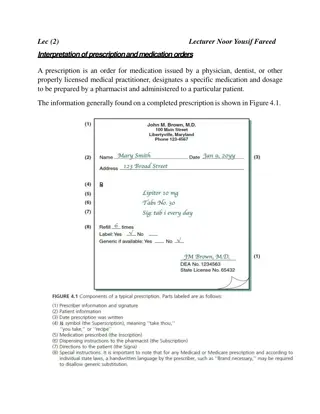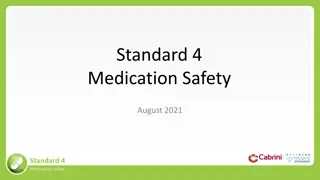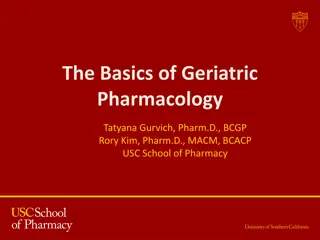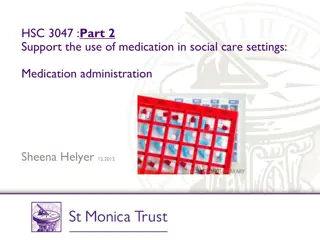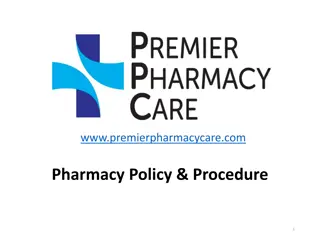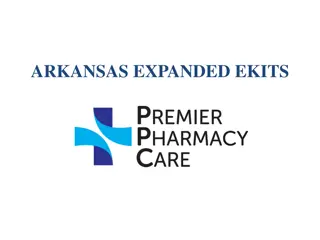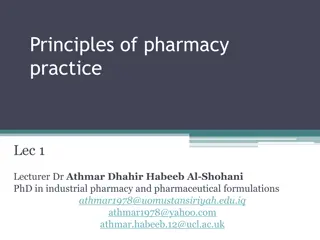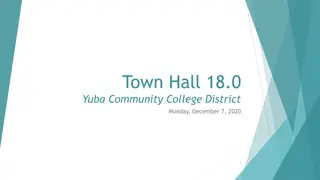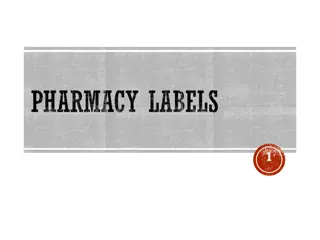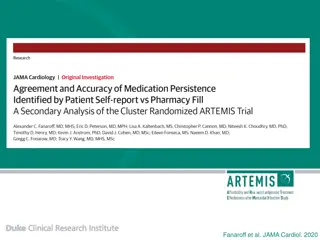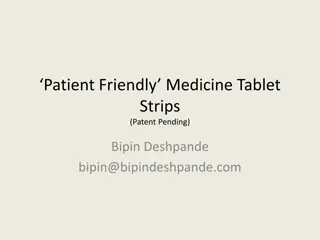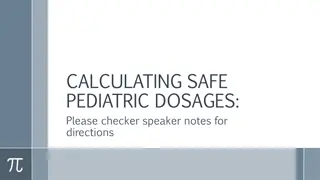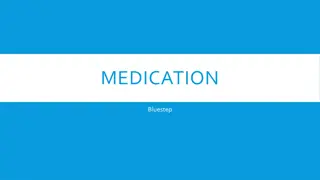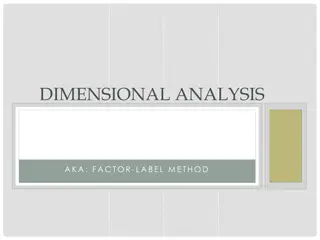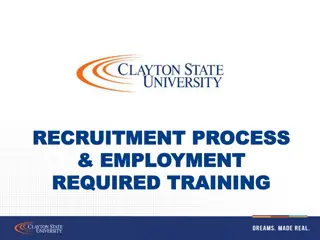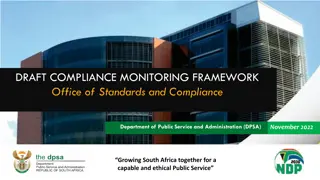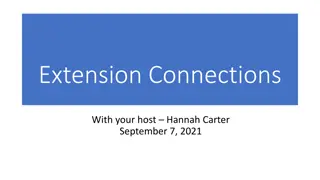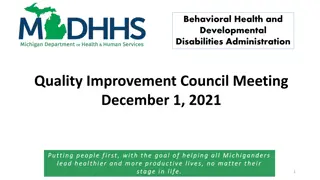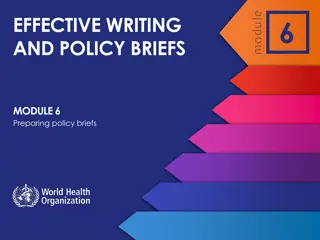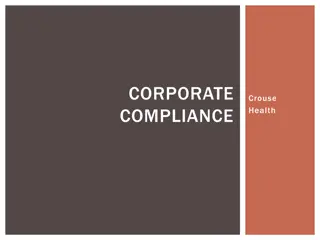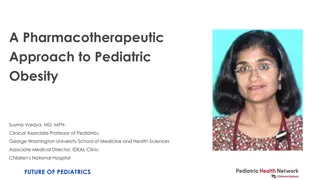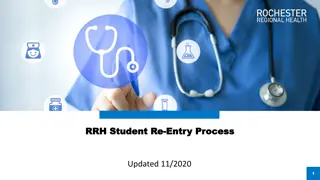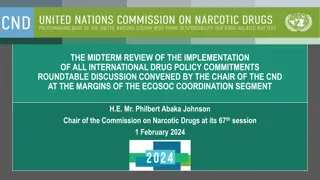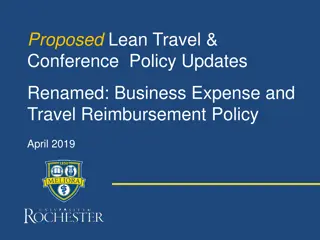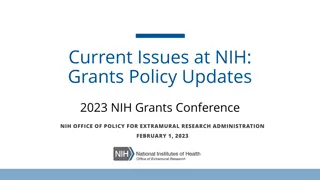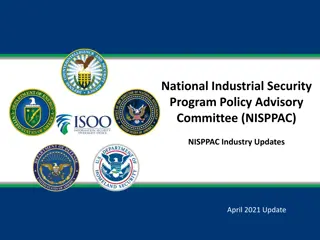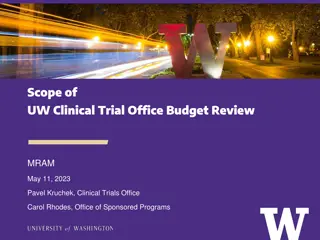Medication Policy Review and Compliance Updates
The presentation emphasizes the importance of timely administration of time-critical medications within a one-hour window to avoid potential harm. It underscores the significance of medication security, authorized access to medication areas, and the need for thorough review of standing orders by an interdisciplinary team. Compliance with these policies is crucial for ensuring patient safety and quality care.
Download Presentation

Please find below an Image/Link to download the presentation.
The content on the website is provided AS IS for your information and personal use only. It may not be sold, licensed, or shared on other websites without obtaining consent from the author. Download presentation by click this link. If you encounter any issues during the download, it is possible that the publisher has removed the file from their server.
E N D
Presentation Transcript
ORIGINAL SLIDE Regulatory and Compliance Accreditation Policy Review Updates Time-critical scheduled medications - Time-critical scheduled medications are those for which an early or late administration of greater than thirty minutes might cause harm or have significant, negative impact on the intended therapeutic or pharmacological effect. Accordingly, scheduled medications identified under the hospital s policies and procedures as time-critical must be administered within thirty minutes before or after their scheduled dosing time, for a total window of 1 hour. Medication security This area remains one of the most frequently cited areas by TJC and hospitals need to have a policy that states who is authorized to have access to medication areas and the training that they have received. Emphasis on documentation especially housekeeping. Minimum requirements for standing orders. ( 482.24(c)(3)) - Standing orders containing medications need to reviewed by an interdisciplinary team including a pharmacist and nurse. Cannot just load existing orders without a review.
ORIGINAL SLIDE Regulatory and Compliance Accreditation Policy Review Updates Time-critical scheduled medications - Time-critical scheduled medications are those for which an early or late administration of greater than thirty minutes might cause harm or have significant, negative impact on the intended therapeutic or pharmacological effect. Accordingly, scheduled medications identified under the hospital s policies and procedures as time-critical must be administered within thirty minutes before or after their scheduled dosing time, for a total window of 1 hour. Medication security This area remains one of the most frequently cited areas by TJC and hospitals need to have a policy that states who is authorized to have access to medication areas and the training that they have received. Emphasis on documentation especially housekeeping. Minimum requirements for standing orders. ( 482.24(c)(3)) - Standing orders containing medications need to reviewed by an interdisciplinary team including a pharmacist and nurse. orders without a review. Cannot just load existing
ORIGINAL SLIDE Accreditation Policy Review One-hour window: Time-critical meds administered within 30 minutes before or after Medication security: Who is authorized to access medication areas Minimum requirements for standing orders: Need to reviewed by pharmacist and nurse 3
ORIGINALSLIDE Accreditation Policy Review One-hour window Time-critical meds administered within 30 minutes before or after Medication security Who is authorized to access medication areas Minimum requirements Standing orders reviewed by pharmacist and nurse 4
SLIDEREDESIGNEDWITHCUSTOMLAYOUT Accreditation Policy Review One-hour window: Time-critical meds administered within 30 minutes before or after Medication security: Who is authorized to access medication areas Minimum requirements for standing orders: Need to reviewed by pharmacist and nurse
SLIDEREDESIGNEDWITHCUSTOMLAYOUT Accreditation Policy Review One-hour window Time-critical meds administered within 30 minutes before or after Medication security Who is authorized to access medication areas Minimum requirements for standing orders Need to reviewed by pharmacist and nurse
SLIDEREDESIGNEDWITHCUSTOMLAYOUT Accreditation Policy Review One-hour window Time-critical meds administered within 30 minutes before or after Medication security Who is authorized to access medication areas Minimum requirements Standing orders reviewed by pharmacist and nurse
ORIGINALSLIDE Budgeting Considerations Sterile Compounding Regulations Prompted by Compounding Ctr incidents Federal Requirements USP Chapter 800 (currently in comment period) Hazardous medications will need to be compounded in separate area. Will require use of Closed System Drug-Transfer Devices (CSTDs) from compounding to administration. State Requirements New pharmacy class license for pharmacies preparing sterile products All pharmacists and technicians must be nationally certified to prepare sterile products. Staff that are not nationally certified will need to register for and complete training. 40 hours of IV prep training for technicians 20 hours of IV prep training for pharmacists Average expense per staff member is $600 Dead line to complete certification is 2015 Closed System Drug Transfer Devices
SLIDEREDESIGNEDWITHSTANDARDLAYOUT Budgeting Considerations Sterile Compounding Regulations Federal Requirements Hazardous medications compounded in separate area Use of Closed System Drug-Transfer Devices (CSTDs) State Requirements License and certification for sterile products Staff needs to take and complete training 40 hours of IV prep training for technicians 20 hours of IV prep training for pharmacists Average expense: $600/person
SLIDEREDESIGNEDWITHCUSTOMLAYOUT Budgeting Considerations Sterile Compounding Regulations Federal Requirements Hazardous medications compounded in separate area Use of Closed System Drug-Transfer Devices (CSTDs) State Requirements License and certification for sterile products Staff needs to take and complete training 40 hours of IV prep training for technicians 20 hours of IV prep training for pharmacists Average expense: $600/person
ORIGINALSLIDE Additional projects Ongoing CAH Integration Bellville cutover RIE initiatives Improve Nurse satisfaction scores Outpatient retail pharmacy go-live Maintain Regulatory compliance Monitoring for Drug diversion/Assess weaknesses Upcoming Clinical manager review of formulary for additional drug cost savings Optimize clinical rounding HCAHPS initiatives
SLIDEREDESIGNEDWITHSTANDARDLAYOUT Additional projects Ongoing CAH Integration Bellville cutover RIE initiatives Improve Nurse satisfaction scores Outpatient retail pharmacy go-live Maintain Regulatory compliance Monitoring for Drug diversion/Assess weaknesses Upcoming Clinical review for additional drug cost savings Optimize clinical rounding HCAHPS initiatives
SLIDEREDESIGNEDWITHCUSTOMLAYOUT Additional projects Ongoing CAH Integration Bellville cutover RIE initiatives Improve satisfaction scores Retail pharmacy go-live Maintain regulatory compliance Monitoring for weaknesses Upcoming Clinical review for additional drug cost savings Optimize clinical rounding HCAHPS initiatives
ORIGINALSLIDE Financial Cost Containment Our clinical programs and protocols, cost-containment strategies, volume-discount drug purchasing and inventory management programs help drive down pharmacy costs o Proactive Approach to Drug Shortage CompleteRx monitors the marketplace to minimize the cost impact of drug shortages on our facilities. With our buying programs and ongoing communication, we determine where a shortage is expected, swap drugs between our facilities, and save the dollars our clients would have spent buying secondary-market drugs. o
SLIDEREDESIGNEDWITHSTANDARDLAYOUT Financial Cost Containment Our clinical programs and protocols, cost-containment strategies, volume-discount drug purchasing and inventory management programs help drive down pharmacy costs. Proactive Approach to Drug Shortage CompleteRx monitors the marketplace to minimize the cost impact of drug shortages on our facilities. With our buying programs and ongoing communication, we determine where a shortage is expected, swap drugs between our facilities, and save the dollars our clients would have spent buying secondary-market drugs.
SLIDEREDESIGNEDWITHCUSTOMLAYOUT Financial Cost Containment Our clinical programs and protocols, cost-containment strategies, volume-discount drug purchasing and inventory management programs help drive down pharmacy costs. Proactive Approach to Drug Shortage CompleteRx monitors the marketplace to minimize the cost impact of drug shortages on our facilities. With our buying programs and ongoing communication, we determine where a shortage is expected, swap drugs between our facilities, and save the dollars our clients would have spent buying secondary-market drugs.
ORIGINALSLIDE Why CompleteRx? Specialize in Hospitals Like Yours We only work with acute care, inpatient hospital pharmacies Not with psych, rehab, or critical access facilities Our services are customized for this type of hospital Smaller company, more personalized service
SLIDEREDESIGNEDWITHSTANDARDLAYOUT Why CompleteRx? Specialize in Hospitals Like Yours We only work with acute care, inpatient hospital pharmacies Not with psych, rehab, or critical access facilities Our services are customized for this type of hospital Smaller company, more personalized service
SLIDEREDESIGNEDWITHCUSTOMLAYOUT Why CompleteRx? We specialize in hospitals like yours We only work with acute care, inpatient hospital pharmacies Not with psych, rehab, or critical access facilities Our services are customized for this type of hospital Smaller company, more personalized service


